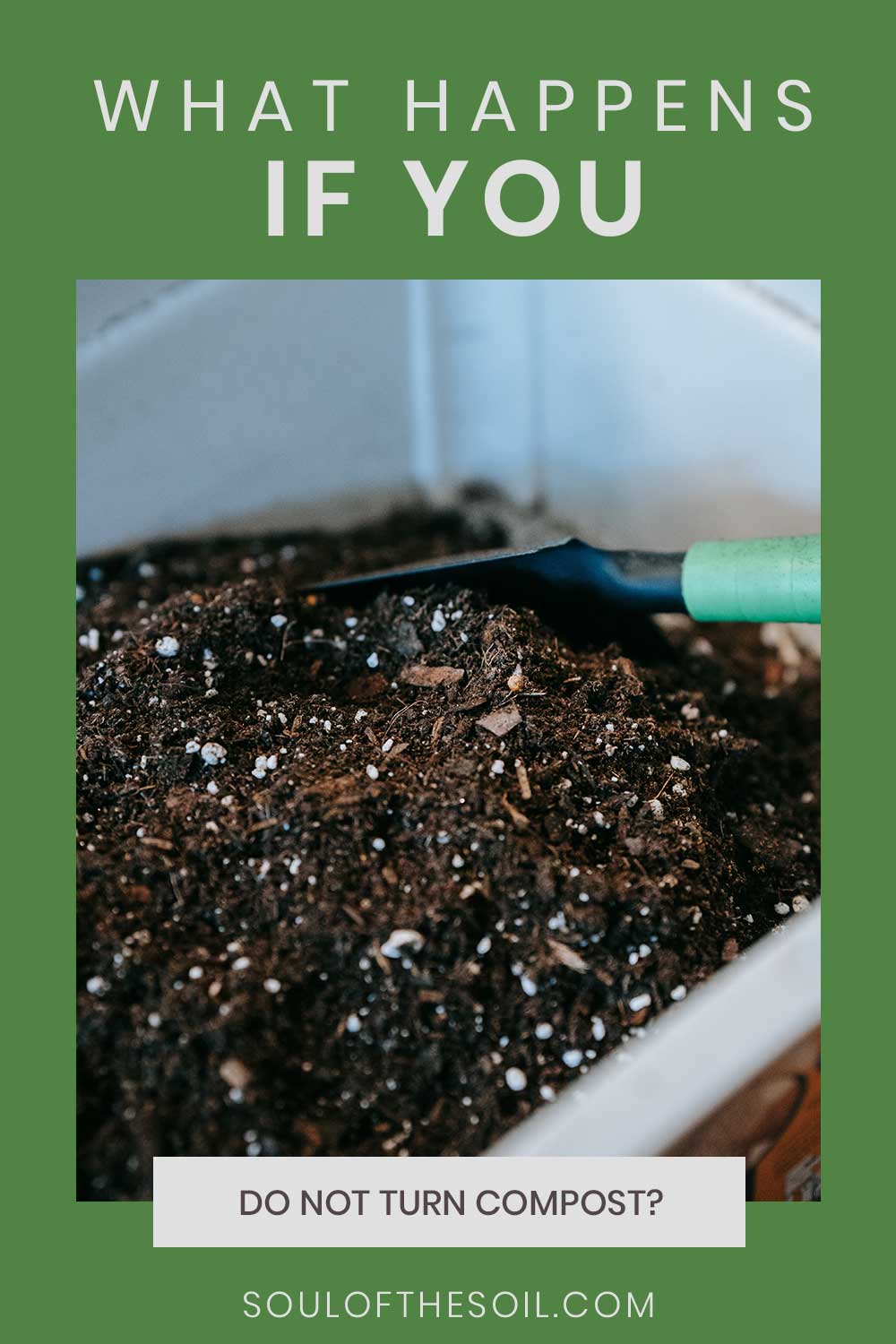What Happens If You Do Not Turn Compost?
We may earn commissions for purchases made through links on our site. Learn more on our about us page.
A certain type of compost must be left alone, unturned, and can be tuned to be more bacterial or fungal in nature.
These types of piles are worm-friendly environments and allow for natural decomposition processes to take place, including the eating and digesting activity of insects and earthworms.
It can take up to a couple of years for carbon materials to turn into usable soil; regular checking will be needed for when the compost is best used within three to six months of the completion of the composing process.

Can you Compost without Turning?
As mentioned earlier, there are specific techniques that will not require turning, even though a once-annual turning might prove beneficial in mixing the developing soils.
For example, worms, Vermi, and compost are created when worms are allowed to consume and recycle organic matter into nutrient-rich soil.
This type of composting will be ready to harvest within three to six months of initial setup.
Removing the worms will take creative techniques, including moving the worm-ready soil to one side of the bin and introducing fresh material, bedding, and food for the worms to migrate to. Thus, allowing for the safe removal of garden-ready soils.
What Happens if the Compost Sits Too Long?
Methods outside of worm composting will require turning. Otherwise, molding and the creation of harmful bacterial environments are risky.
There will also be a slight chance that the soil will decompose naturally, especially if the earth’s insects find their way into the pile and be ready for use.
Issues with readied soils that sit too long are the loss of nutrients and the loss of the bacteria and microorganisms that could be used on the next generations of compost soils.
The best composters have bacteria colonies that are decades old, along with microorganisms that have lived just as long.
How Often Do You Need to Turn Compost?
In order to create the best conditions for composting, there will be a need for the occasional introduction of oxygen to the middle of the piles. Mixing up the soils will not harm the worms or other bio-organisms living in the dirt; it just gives them a quick roller coaster ride.
The frequency in which the piles should be turned depends on the green-to-brown ratio, the compost pile size, and the moisture concentration within. For this, consider looking at the different methods developed over the years.
When Can you Stop Turning the Compost?
As mentioned earlier in the article, there are going to be certain methods that will have harvestable soils within three to six months of initial mixing.
These techniques require minimal turning, instead utilizing the nature of worms to create the soils and naturally oxidize the inner portions of the compost pile.
The final point at which a pile can stop being turned is when the soil is ready for use in the fields, gardens, and other growing plots needing new dirt.
This stage can be recognized when the organic materials are no longer visible, and the overall composition of the pile is a rich potting soil consistency.
How Can You Tell If Your Compost is Ruined?
No, there is no possible way to ‘ruin’ compost; piles can be reactivated with fresh organic materials and other techniques to settle any anxiety.
Certain composts might mold if not properly aerated, but those portions of compost can be removed or turned into food for worms and insects if introduced thereafter.
The problem with leaving compost to sit is that the soil’s nutrients and structure are lost over time, making it less beneficial if used at the right times. The easiest way to keep compost active is to regularly feed a worm colony, which can turn and oxidize the inner soils for you.
Final Thoughts on What Happens if You do Not Turn Compost
Compost heaps are relatively easy to maintain, and they just need a watchful eye for the time to harvest the nutrient-rich soils and use them in the garden or other growing plots.
Investing in worms will be the most effective way to keep a compost pile in good condition, adequately oxidized, and turned.
There will be dozens of different species of worms that can be employed to keep the compost active. Take a moment to do some research and find the suitable species for the soil types you wish to create.
Feeding these little soil manufacturers is as simple as adding scraps from meals to the pile and ensuring which foods will be appropriate for which environments.



Leave a Reply
You must be logged in to post a comment.